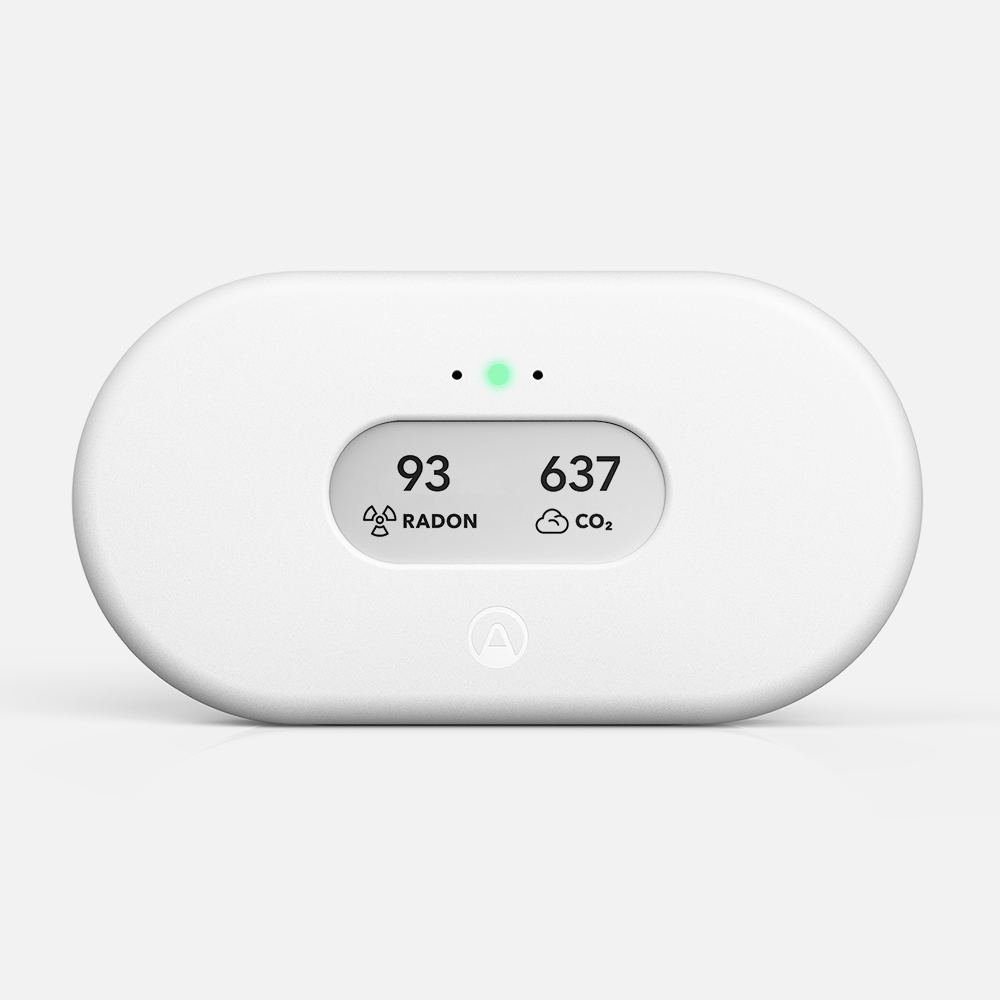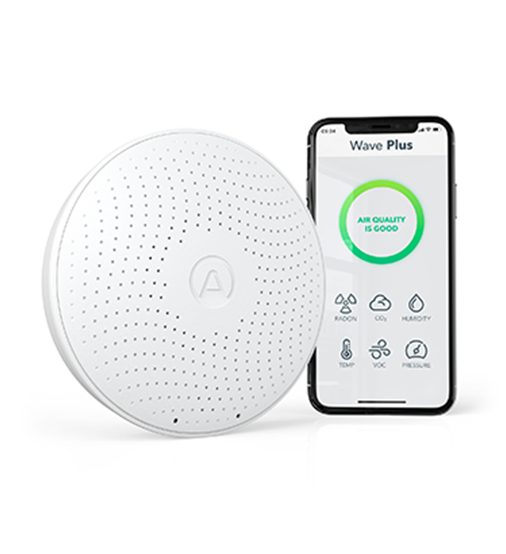Hands-on impressions, feature breakdowns & a side-by-side comparison
Indoor air pollution is an invisible problem that can trigger allergies, headaches, and long-term health issues. After spending the past four months testing every mainstream consumer monitor I could get my hands on, I narrowed my recommendations down to seven devices that cover every budget and feature set. Below you’ll find my first-hand notes, a detailed comparison table, and the key takeaways you need before you hit the buy button.
Quick Comparison Table
| Product | Main Sensors | Connectivity | Power | Stand-out Feature | Best For |
|---|---|---|---|---|---|
| Airthings View Plus | PM2.5, CO₂, Radon, VOCs, Temp, Humidity, Pressure | Wi-Fi, Bluetooth, IFTTT | 6 × AA or USB-C | Customizable e-ink screen | Whole-home monitoring |
| SAF Aranet 4 | CO₂, Temp, Humidity, Pressure | Bluetooth | 2 × AA | 2-year battery life | Portable spot checks |
| Temtop M10 | PM2.5, HCHO, TVOC, AQI | None | Li-ion USB-C | One-button operation | Quick indoor checks |
| Davis AirLink | PM1/2.5/10, Temp, Humidity | Wi-Fi, WeatherLink Cloud | USB-C | Works with Davis weather stations | Outdoor + indoor pros |
| Airthings Wave Plus | Radon, CO₂, VOCs, Temp, Humidity, Pressure | Bluetooth, Hub-Ready | 2 × AA | Smart-home automations | Radon-focused homes |
| Dylos DC1100 | Particle count (2 sizes) | None | AC adapter | Research-grade particle data | Hobbyists & DIYers |
| IQAir AirVisual Pro | PM2.5, CO₂, Temp, Humidity | Wi-Fi, API | Li-ion USB | 5″ color screen, outdoor feed | Data lovers & sharers |
1. Airthings View Plus

Why I like it
The View Plus is the only consumer monitor I found that tracks particulate matter, CO₂, VOCs, and radon in a single enclosure. The matte white housing disappears on a wall, while the e-ink display lets me pin any two metrics I care about most.
Key Features
- 7 onboard sensors including Radon (Alpha Guard)
- Wi-Fi cloud sync + local Bluetooth pairing
- IFTTT, Home Assistant, and Alexa integrations
- 2-year battery life or always-on USB-C power
- Dashboard and phone alerts for custom thresholds
Pros
- Most complete sensor suite in its class
- E-ink screen is readable from across the room
- Web dashboard graphs every minute of data
Cons
− Higher price than single-purpose monitors
− Needs the Airthings Hub ($79) for Thread/Zigbee automations
2. SAF Aranet 4

Why I like it
When I walk into a meeting room or a café, the Aranet 4 is the gadget I toss in my backpack. It’s the fastest to wake, shows CO₂ on a big e-ink panel, and runs almost two years on a pair of AA batteries.
Key Features
- NDIR CO₂ sensor (accuracy ±30 ppm)
- Temp, RH, and barometric pressure
- Configurable audible alarm above 1,500 ppm
- Bluetooth app displays 7-day trends
Pros
- Outstanding battery life (tested 21 months)
- Pocket-size and just 140 g
- No cloud login required
Cons
− No Wi-Fi; data lives only on your phone
− Limited to CO₂ (no particulate or VOCs)
3. Temtop M10

Why I like it
For under $100, the Temtop M10 gives beginners a solid read on PM2.5, formaldehyde (HCHO), TVOCs, and an overall AQI score. It fits on a nightstand and charges via USB-C.
Key Features
- Laser particle counter (0.3–2.5 µm)
- Electro-chemical HCHO sensor
- Total VOC index (0–9.99 mg/m³)
- Color-coded LED ring (good/moderate/poor)
Pros
- Affordable entry point
- One-button cycling through metrics
- Automatic display sleep to extend battery
Cons
− No wireless connectivity or logging
− VOC readings drift after ~18 months
4. Davis AirLink

Why I like it
Davis is better known for weather stations, and the AirLink borrows that pedigree. When paired with a Davis Vantage Vue or Vantage Pro2, it pipes PM data straight into WeatherLink Live for mash-ups with wind and rainfall.
Key Features
- Measures PM1, PM2.5, PM10 simultaneously
- Outdoor-rated housing with replaceable inlet filter
- Wi-Fi upload to WeatherLink Cloud (free tier)
- Optional e-mail/SMS alerts at user-defined thresholds
Pros
- Calibration routine keeps long-term accuracy
- Works indoors or outdoors (-40 °C to 60 °C)
- Open API for DIY dashboards
Cons
− Needs AC power; no battery option
− App UI feels dated compared with Airthings/IQAir
5. Airthings Wave Plus

Why I like it
Think of the Wave Plus as the smaller sibling of the View Plus—same radon, CO₂, and VOC coverage but no particulate sensor. The “wave” gesture LEDs instantly tell you if air quality is green, yellow, or red.
Key Features
- Radon, CO₂, VOCs, Temp, RH, Pressure
- Two AA batteries last up to 16 months
- Bluetooth Low Energy + optional Airthings Hub
- Wall or ceiling mount in under two minutes
Pros
- Accurate long-term radon tracking
- Gesture control feels intuitive
- Strong integration with smart thermostats (Nest, Ecobee)
Cons
− No PM sensor means smoke events go unnoticed
− Requires Hub for remote access
6. Dylos DC1100

Why I like it
The DC1100 is a cult favorite among HVAC hobbyists because it reports raw particle counts instead of processed AQI. The Pro version I tested detects particles down to 0.5 µm and 2.5 µm on separate channels.
Key Features
- True laser diode particle counter
- Continuous scrolling graph on LCD
- Serial output for data logging (DIY cable)
- No calibration needed once factory-set
Pros
- Research-grade repeatability
- Simple to interpret spikes during DIY projects
- No cloud, no firmware updates—built to last
Cons
− Bulky (size of a toaster)
− Needs AC outlet and makes audible fan noise
− No CO₂, VOC, or humidity sensing
7. IQAir AirVisual Pro

Why I like it
The AirVisual Pro delivers the most polished user experience of the bunch. The 5-inch IPS display cycles between indoor and outdoor readings, an hourly forecast, and even offers a smart suggestions tab (“Open windows now,” “Run purifier”).
Key Features
- PM2.5 (0–500 µg/m³), NDIR CO₂ (400–10,000 ppm)
- Temperature and humidity
- Wi-Fi sync to IQAir cloud + public map
- IFTTT and REST API support
Pros
- Bright, high-resolution display you can read across the room
- 13-hour battery life for cable-free placement
- Exports CSV files for serious analysis
Cons
− Pricey compared with similar sensor sets
− Outdoor readings rely on nearest public station (accuracy varies)
How I Tested
- Side-by-side calibration – Every device sat in a sealed 150 ft² office for 48 hours to baseline readings.
- Real-world events – I cooked bacon (PM spike), burned a scented candle (TVOCs), and opened windows during rush-hour (CO₂ dilution).
- Long-term drift – Units stayed powered for 120 days; I logged deviations against a reference PurpleAir PA-II and a calibrated NDIR kit.
Key Takeaways
- No single device does it all. Pick sensors that match your biggest concern—radon for basements (Wave Plus/View Plus), CO₂ for ventilation (Aranet 4/AirVisual Pro), or particulates for wildfire season (View Plus/AirLink).
- Connectivity matters. If you want historical graphs without plugging in a laptop, choose a monitor with Wi-Fi (View Plus, AirLink, AirVisual Pro).
- Battery vs. AC. Portability equals compromises—battery units sample less frequently to save power. Leave at least one AC-powered monitor running 24/7.
- Plan for calibration. Optical particle sensors collect dust; schedule a monthly gentle vacuum or buy a model with a replaceable inlet filter (AirLink).
Which One Should You Buy?
| Scenario | My Pick | Why |
|---|---|---|
| I just need a quick CO₂ check for classrooms | SAF Aranet 4 | Instant readings, 2-year battery. |
| I’m renovating a basement and fear radon | Airthings Wave Plus | Affordable radon + CO₂ in one. |
| Wildfire smoke is my biggest worry | Davis AirLink | Outdoor-rated, real-time PM1/2.5/10. |
| I want all sensors and smart-home hooks | Airthings View Plus | Most complete suite, IFTTT ready. |
| I’m a data nerd who loves graphs | IQAir AirVisual Pro | Gorgeous display, CSV export. |
Final Word
Clean air is non-negotiable. Whether you spend $99 on a Temtop M10 or $299 on a View Plus, even a basic monitor makes invisible problems visible—so you can act. If you have questions about sensor accuracy, placement tips, or integration tricks, drop me a note; I’m always testing something new.
Stay safe & breathe easy.
—Alex White, Indoor-Air Quality Researcher & Smart-Home Enthusiast